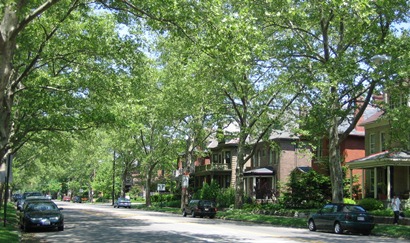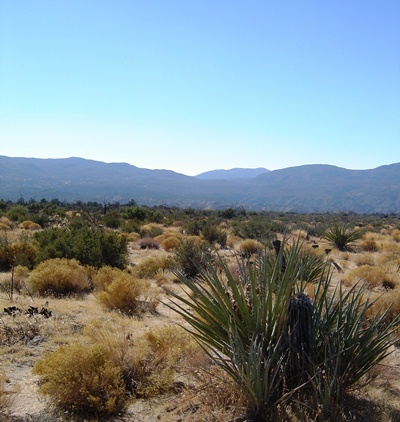Research
Our research
emphasizes questions
that have strong theoretical implications for how biological systems
work across multiple scales and
directs application towards overcoming sustainability challenges. Most
of our work uses sensor
technology, remote sensing, field surveys, and numerical modeling
techniques to
generate multiple lines of evidence in answering questions.
Our research has generally focused on the
relationships between the carbon cycling, hydrologic cycling, energy
partitioning, and biodiversity in dryland ecosystems across a diversity
of land uses. We have
explored these relationships both in terms of understanding carbon
cycle
responses to precipitation variability, and the role of vegetation for
mitigating urban heat islands, and trade-offs in ecosystem services
from high temperature agriculture. Together we aim to understand
interacting sustainability trade-offs associated with natural, urban,
and agricultural ecosystems across regional landscapes.
Much of my work is collaborative and I value opportunities to work with researchers from other disciplines, institutions, and nations. I also like to analyze data for as many uninterrupted hours as possible.
Currently the lab has three main thrusts:-- the role of vegetation in urban ecosystem resilience to climate changes
-- aridland carbon and nitrogen trace gas emission responses to climate change and exotic invasions
-- agricultural sustainability in southern California
Coupled
Carbon and Nitrogen Cycling in High Temperature Drylands
My research on ecosystem responses to precipitation variation is directed towards developing and testing new processes and parameterizations for the land surface components of earth systems models (for example the Community Land Model by the National Center for Atmospheric Research). A major challenge for ecologists is scaling between organismal processes to landscape patterns. My lab investigates the reciprocal relationships between organisms and landscapes using field observation, experimental, numerical modeling approaches. I have characterized differences in contrasting patch types such as grass and tree or underneath plant canopy or the interplant spaces using networks of ecosystem sensors. I have shown differences in key plant functional types and water-use strategies – where a tree dominated ecosystem regulated water use more strongly through stomatal control, the grass dominated ecosystem regulated water use through leaf area control. Currently, we are examining how grass invasions into chaparral landscapes is both a response to climate changes and mediator of ecosystem feedbacks to climate.
Representative Citations
Liang LL, DA Grantz, and GD Jenerette. 2016. Multivariate regulation of CO2 and N2O pulse emissions from agricultural soils. Global Change Biology 22:1286-1298
Oikawa PY, C Ge, J Wang, JR Eberwein, LL Liang, L Allsman, DA Grantz, and GD Jenerette. 2015. Unusually high soil nitrogen oxide emissions influence air quality in high temperature agricultural region. Nature Communications 6:8753 DOI: 10.1038/NCOMMS9753
Eberwein JR, PY Oikawa, LA Allsman, and GD Jenerette. 2015. Carbon availability regulates soil respiration response to nitrogen and temperature. Soil Biology and Biochemistry 88:158-164
Jenerette GD and A Chatterjee. 2012. Soil metabolic pulses: water, substrate, and biological regulation. Ecology 93:959-966
Vegetation
in Cities:
Biogeography and Ecosystem Services
Within Los Angeles, CA region our group
is studying the
distribution of plant biodiversity within the urbanized landscape. We are currently assessing
patterns of tree
assemblages and evaluating patterns of phenological variation. We are also quantifying
biodiversity in urban
gardens and the services provided by these gardens.
Both
the tree and garden
studies examine how the constructed biodiversity changes through time
and
begins identifying the trade-offs in ecosystem services provided by
urban
biodiversity. We are showing that vegetation as a climate
adaptation tool shows a 5-fold magnitude of variation in effectiveness.
Recently, we have shown a correlation between individual
parcel
surface temperatures with heat related health outcomes.
Linking
land cover decisions about vegetation may have important outcomes for
building more climate resilient cities.
Representative Citations
Jenerette GD, SL Harlan, A Buyantuev, WL Stefanov, J Declet-Barreto, BL Ruddell, S Myint, S Kaplan, and X Li. 2016. Micro scale urban surface temperatures are related to land cover features and heat related health impacts in Phoenix, AZ USA. Landscape Ecology 31:745-760Tayyebi A and GD Jenerette. 2016. Increases in the climate change adaption effectiveness and availability of vegetation across a coastal to desert climate gradient in metropolitan Los Angeles, CA, USA. Science of the Total Environment 548-549:60-71
Clarke LW, GD Jenerette,
and A Davalia. 2013. The luxury of vegetation and the legacy of tree
biodiversity in Los Angeles, CA. Landscape
and Urban Planning 116:48-59
Agricultural
Sustainability
We
are expanding our research into understanding resource and land use
efficiencies in agricultural production with goals of increasing
production while minimzing negative consequences. Our work
here
is directed to better understanding distributions and dynamics of urban
agriculture. In Los Angeles we have documented immense
diversity
of garden plants. As a cautionary note, we have also shown
many
gardens contain high concentrations of many trace metals.
Currently, we are taking a
life-cycle approach coupled with intensive field measurements.
We
also are examining effects of larger scale agricultural practices in
high temperature environments.
We recently began a five year project
examining life-cycle consequences for Sorghum production and testing
new pulse ecosystem physiological theories. This work has led
to
new plant-soil models of carbon exchange and has documented through
several approaches the potentially high rates of N trace gas emissions
that can influence regional air quality.
Representative Citations
Clarke LW, GD Jenerette, and DJ Bain. 2015. Urban legacies and soil management affect the concentration and speciation of soil metals in Los Angeles community garden soils. Environmental Pollution 197:1-12
Clarke LW and GD Jenerette. 2015. Biodiversity and direct ecosystem service regulation in the community gardens of Los Angeles, CA. Landscape Ecology 30:367-653
Oikawa PY, GD Jenerette, and DA Grantz. 2015. Offsetting high water demands with high productivity: Sorghum as a biofuel crop in a high irradiance arid ecosystem. Global Change Biology Bioenergy 7:974-983
